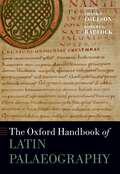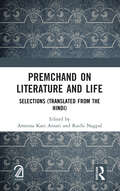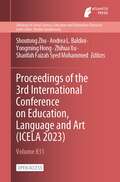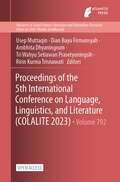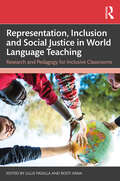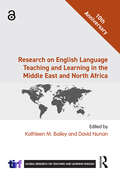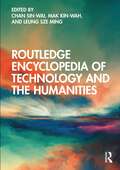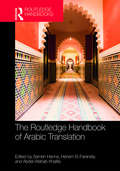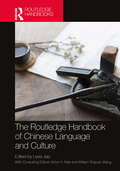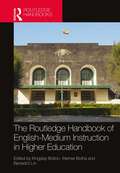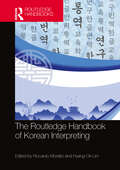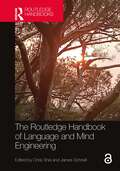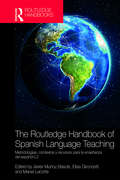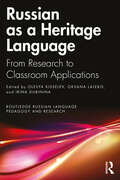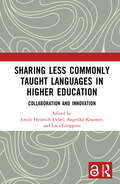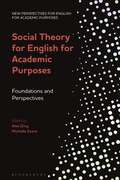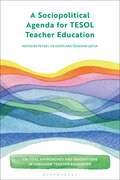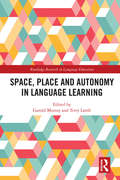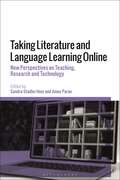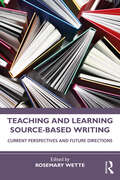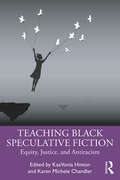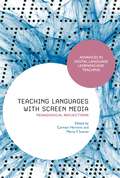- Table View
- List View
The Oxford Handbook of Latin Palaeography (Oxford Handbooks)
Latin books are among the most numerous surviving artifacts of the Late Antique, Mediaeval, and Renaissance periods in European history; written in a variety of formats and scripts, they preserve the literary, philosophical, scientific, and religious heritage of the West. The Oxford Handbook of Latin Palaeography surveys these books, with special emphasis on the variety of scripts in which they were written. Palaeography, in the strictest sense, examines how the changing styles of script and the fluctuating shapes of individual letters allow the date and the place of production of books to be determined. More broadly conceived, palaeography examines the totality of early book production, ownership, dissemination, and use. The Oxford Handbook of Latin Palaeography includes essays on major types of script (Uncial, Insular, Beneventan, Visigothic, Gothic, etc.), describing what defines these distinct script types, and outlining when and where they were used. It expands on previous handbooks of the subject by incorporating select essays on less well-studied periods and regions, in particular late mediaeval Eastern Europe. The Oxford Handbook of Latin Palaeography is also distinguished from prior handbooks by its extensive focus on codicology and on the cultural settings and contexts of mediaeval books. Essays treat of various important features, formats, styles, and genres of mediaeval books, and of representative mediaeval libraries as intellectual centers. Additional studies explore questions of orality and the written word, the book trade, glossing and glossaries, and manuscript cataloguing. The extensive plates and figures in the volume will provide readers wtih clear illustrations of the major points, and the succinct bibliographies in each essay will direct them to more detailed works in the field.
Premchand on Literature and Life: Selections (Translated from the Hindi)
Premchand on Literature and Life is a collection of Premchand's (1880-1936) fifty non-fiction prose pieces translated into English. The selected pieces in the collection compirse his editorials and articles which appeared in literary magazines and periodicals like Hans and Zamana, and cover a period from the early 1920s till 1936. In them, Premchand emerges as a literary critic and social commentator, holding forth on literature, his literary world, and the socio-cultural milieu of his ties. His keen observations and insightful critique are a call for evolving appropriate processes and agencies to encourage literary creativity and evaluation. In the selected prose pieces, Premchand’s views are like a prism through which a nation's literary quotient can be assessed. This book is co-published with Aakar Books. Print edition not for sale in South Asia (India, Sri Lanka, Nepal, Bangladesh, Pakistan and Bhutan)
Proceedings of the 3rd International Conference on Education, Language and Art (Advances in Social Science, Education and Humanities Research #831)
This is an open access book. About Education: In a narrow sense refers to specially organized school education; in a broader sense, it refers to the social and practical activities that affect the physical and mental development of people. The significance of education is to make people understand the responsibility and righteousness of human society as a person. Only when a person understands his responsibilities and obligations can he become a useful person. The premise is that only those who fulfill their responsibilities and obligations can become a useful person. This is the purpose of education.About Language: Language is a product of a certain society, a phenomenon unique to society, there is no such thing as language outside of society, there is no society, there is no language, the development of language by social constraints, language with the emergence of society, with the development of society and development, with the death of society and death.Language is the bridge and link between members of society, is the tool for mutual communication and expression of ideas, society can not be separated from language, without language, society will collapse and cease to exist.About Art: The value of art, human core, people's aesthetic attitude determines the value of art. Art is a spiritual product, closely related to our life, it can make enrich our spiritual life. The value of art is not only limited to life, it has great value in society, history and business. As an appreciator, we perceive the beauty of art works through images, sounds, experiences, observations, imaginations, and emotions in multiple dimensions, so as to obtain spiritual and emotional pleasure.
Proceedings of the 5th International Conference on Language, Linguistics, and Literature (Advances in Social Science, Education and Humanities Research #792)
This is an open access book. The biennial Conference of Language, Linguistics, and Literature (Colalite) always attempts to accommodate intriguing themes. This year, the 5th International Colalite presents "Dressed to Kill: Fashion, Body, and Identity" as a theme to accommodate the growing interest in fashion and lifestyle in the fields of language, literature, cultural studies, translation, and business communication. For this reason, the 5th Colalite encourages researchers, authors, academic practitioners, and those who are interested in exploring this issue to participate in the conference.
Pseudo-Skylax's Periplous: The Circumnavigation of the Inhabited World: Text, Translation and Commentary
The text of the Periplous or 'circumnavigation' that survives under the name of Skylax of Karyanda is in fact by an unknown author of the 4th century BC. It describes the coasts of the Mediterranean and Black Sea, naming hundreds of towns with geographical features such as rivers, harbours and mountains. But, argues Graham Shipley, it is not the record of a voyage or a navigational handbook for sailors. It is, rather, the first work of Greek theoretical geography, written in Athens at a time of intellectual ferment and intense speculation about the nature and dimensions of the inhabited world. While other scientists were gathering data about natural science and political systems or making rapid advances in philosophy, rhetorical theory, and cosmology, the unknown author collected data about the structure of the lands bordering the seas known to the Greeks, and compiled sailing distances and times along well-frequented routes. His aim was probably nothing less ambitious than to demonstrate the size of the inhabited world of the Greeks. This is the first full edition of the Periplous for over 150 years, and includes a newly revised Greek text and specially produced maps along with the first complete English translation. Interest in ancient geographical writings has never been so strong, yet many of the key texts are inaccessible to those who do not read Greek. With its relatively limited vocabulary and simple, yet varied, syntax, it will provide a useful text for those moving beyond the elementary study of ancient Greek language. In this fully reset second edition, the introduction is expanded to include a section on the late-antique geographer Markianos, and updates incorporated into both the Introduction and Commentary.
Representation, Inclusion and Social Justice in World Language Teaching: Research and Pedagogy for Inclusive Classrooms
This volume introduces teaching methodologies for improving and incorporating representation, inclusion and social justice perspectives in the world language curriculum. Chapters present state-of-the-art research and cover many different language contexts, including French, Spanish, Mandarin, and Portuguese. Authors discuss difficult and hot topics, such as Critical Language Awareness, Critical Race Theory, non-binary language use in gendered languages, culturally sustaining curriculum, teaching heritage language speakers, and more. Ideal for graduate courses, students, and scholars in world language education, the volume offers new pathways and strategies for promoting diversity and equity in the classroom.
Research on English Language Teaching and Learning in the Middle East and North Africa (Global Research on Teaching and Learning English)
The tenth volume in the TIRF-Routledge series, this book features research on the teaching and learning of English in the Middle East and North Africa (MENA). With chapters written by TIRF Doctoral Dissertation Grant awardees and internationally known scholars, the volume addresses contemporary challenges and considerations to teaching English in the MENA context. With empirical research covering a wide range of under-studied contexts, this book provides important insights and future directions to improve research and instruction. Offering up-to-date research at the primary, secondary, and post-secondary levels, this volume is an essential resource for language education programs and pre-service teachers.Chapter 7 of this book is freely available as a downloadable Open Access PDF at http://www.taylorfrancis.com under a Creative Commons [Attribution-Non Commercial-No Derivatives (CC-BY-NC-ND)] 4.0 license.
Routledge Encyclopedia of Technology and the Humanities
Routledge Encyclopedia of Technology and the Humanities is a pioneer attempt to introduce a wide range of disciplines in the emerging field of techno-humanities to the English-reading world.This book covers topics such as archaeology, cultural heritage, design, fashion, linguistics, music, philosophy, and translation. It has 20 chapters, contributed by 26 local and international scholars. Each chapter has its own theme and addresses issues of significant interest in the respective disciplines. References are provided at the end of each chapter for further exploration into the literature of the relevant areas. To facilitate an easy reading of the information presented in this volume, chapters have been arranged according to the alphabetical order of the topics covered.This Encyclopedia will appeal to researchers and professionals in the field of technology and the humanities, and can be used by undergraduate and graduate students studying the humanities.
The Routledge Handbook of Arabic Translation
Translation-related activities from and into Arabic have significantly increased in the last few years, in both scope and scale. The launch of a number of national translation projects, policies and awards in a number of Arab countries, together with the increasing translation from Arabic in a wide range of subject areas outside the Arab World – especially in the aftermath of the Arab Spring – have complicated and diversified the dynamics of the translation industry involving Arabic. The Routledge Handbook of Arabic Translation seeks to explicate Arabic translation practice, pedagogy and scholarship, with the aim of producing a state-of-the-art reference book that maps out these areas and meets the pedagogical and research needs of advanced undergraduate and postgraduate students, as well as active researchers.
The Routledge Handbook of Arabic Translation
Translation-related activities from and into Arabic have significantly increased in the last few years, in both scope and scale. The launch of a number of national translation projects, policies and awards in a number of Arab countries, together with the increasing translation from Arabic in a wide range of subject areas outside the Arab World – especially in the aftermath of the Arab Spring – have complicated and diversified the dynamics of the translation industry involving Arabic. The Routledge Handbook of Arabic Translation seeks to explicate Arabic translation practice, pedagogy and scholarship, with the aim of producing a state-of-the-art reference book that maps out these areas and meets the pedagogical and research needs of advanced undergraduate and postgraduate students, as well as active researchers.
The Routledge Handbook of Chinese Language and Culture (Routledge Language Handbooks)
The Routledge Handbook of Chinese Language and Culture represents the first English anthology that delves into the fascinating and thought-provoking relationship between the Chinese language and culture, exploring various macro and micro perspectives.Chinese culture boasts a history of ten thousand years, while the Chinese language’s recorded history spans at least three thousand years, dating back to the Shang dynasty oracle bone inscriptions (OBI).This handbook is comprised of 17 chapters from 18 scholars including Victor Mair and William S-Y. Wang. Many chapters approach their respective topics with a comprehensive and historical outlook. Certain extensive subjects are addressed in multiple chapters, complementing one another. These topics include: The languages and peoples of China, and the southern Chinese dialects Mandarin’s evolution into a national language and its related writing reforms Language as a propaganda tool in the Cultural Revolution and in contemporary China Chinese idioms and colloquialisms This book offers an approachable exploration of the subject, appealing to both specialists and enthusiasts of the Chinese language and culture.
The Routledge Handbook of English-Medium Instruction in Higher Education (Routledge Handbooks in Linguistics)
This Handbook discusses the theoretical and disciplinary background to the study of English-medium instruction (EMI) in higher education worldwide. It highlights issues relating to EMI pedagogy, varying motivations for EMI education, and the delivery of EMI in diverse contexts across the world. The spread of English as a teaching medium and the lingua franca of the academic world has been the subject of various debates in recent years on the perceived hegemony of the English language and the ‘domain loss’ of non-English languages in academic communication. Encompassing a wide range of contributions to the field of EMI, the chapters of this Handbook are arranged in four distinct parts: Part I provides an overview of English-medium instruction in higher education worldwide; Part II focusses on EMI in Europe; Part III on EMI in the Middle East, North Africa, and Sub-Saharan Africa; and Part IV on EMI in the Asian region. The overall scope and level of expertise of this Handbook provides an unrivalled overview of this field of education. It serves as an essential reference for many courses dealing with applied linguistics, English language education, multilingualism, sociolinguistics, and related subjects at many levels of education, including Master’s and PhD-level studies. This Handbook serves as a valuable edition for university libraries across the world and an essential read for many faculty, undergraduate and postgraduate students, educators, and policymakers.
The Routledge Handbook of Korean Interpreting (Routledge Handbooks in Translation and Interpreting Studies)
Professor Riccardo Moratto and Professor Hyang-Ok Lim bring together the most authoritative voices on Korean interpreting. The first graduate school of interpretation and translation was established in 1979 in South Korea. Since then, not only has the interpretation and translation market grown exponentially, but so too has research in translation studies. Though the major portion of research focuses on translation, interpretation has not only managed to hold its own, but interpretation studies in Korea have been a pioneer in this field in Asia. This handbook highlights the main interpretation research trends in South Korea today, including case studies of remote interpreting during the Covid-19 pandemic, Korean interpreting for conferences, events, and diplomacy, and research into educating interpreters effectively. An essential resource for researchers in Korean interpreting, this handbook will also be very valuable to those working with other East Asian languages.
The Routledge Handbook of Language and Mind Engineering
The Routledge Handbook of Language and Mind Engineering is a comprehensive work that delves into the complex interplay between language, culture, politics, and media in shaping the human mind.The book is divided into five main sections, each exploring different aspects of mind engineering: I. Political Mind Engineering; II. Commercial Mind Engineering; III. Media, Culture, and Mind Engineering; IV. Linguistic and Semiotic Analysis of Mind Engineering; V. Mind Engineering in Educational Settings.The book provides a multi-dimensional perspective on how language, media, culture, and politics intersect to shape individuals' thoughts and beliefs. It highlights the diverse methods and contexts in which mind engineering occurs, making it a valuable resource for scholars, researchers, and policymakers interested in understanding the complexities of contemporary discourse and manipulation of human thought.The contents of this cutting-edge handbook will engage all undergraduate, postgraduate, PhD students and scholars, and researchers at all levels, in fields such as languages, linguistics, politics, communication studies, media studies, and psychology.Chapter 15 of this book is freely available as a downloadable Open Access PDF at http://www.taylorfrancis.com under a Creative Commons Attribution (CC-BY) International license.Chapter 17 of this book is freely available as a downloadable Open Access PDF at http://www.taylorfrancis.com under a Creative Commons Attribution‑Non Commercial‑No Derivatives (CC‑BY‑NC‑ND) 4.0 license.Chapter 18 of this book is freely available as a downloadable Open Access PDF at http://www.taylorfrancis.com under a Creative Commons Attribution-Non Commercial-No Derivatives (CC-BY-NC-ND) 4.0 license.
The Routledge Handbook of Spanish Language Teaching (Routledge Spanish Language Handbooks)
The Routledge Handbook of Spanish Language Teaching: metodologías, contextos y recursos para la enseñanza del español L2, provides a comprehensive, state-of-the-art account of the main methodologies, contexts and resources in Spanish Language Teaching (SLT), a field that has experienced significant growth world-wide in recent decades and has consolidated as an autonomous discipline within Applied Linguistics. Written entirely in Spanish, the volume is the first handbook on Spanish Language Teaching to connect theories on language teaching with methodological and practical aspects from an international perspective. It brings together the most recent research and offers a broad, multifaceted view of the discipline. Features include: Forty-four chapters offering an interdisciplinary overview of SLT written by over sixty renowned experts from around the world; Five broad sections that combine theoretical and practical components: Methodology; Language Skills; Formal and Grammatical Aspects; Sociocultural Aspects; and Tools and Resources; In-depth reflections on the practical aspects of Hispanic Linguistics and Spanish Language Teaching to further engage with new theoretical ideas and to understand how to tackle classroom-related matters; A consistent inner structure for each chapter with theoretical aspects, methodological guidelines, practical considerations, and valuable references for further reading; An array of teaching techniques, reflection questions, language samples, design of activities, and methodological guidelines throughout the volume. The Routledge Handbook of Spanish Language Teaching contributes to enriching the field by being an essential reference work and study material for specialists, researchers, language practitioners, and current and future educators. The book will be equally useful for people interested in curriculum design and graduate students willing to acquire a complete and up-to-date view of the field with immediate applicability to the teaching of the language.
The Routledge Handbook of Spanish Language Teaching (Routledge Spanish Language Handbooks)
The Routledge Handbook of Spanish Language Teaching: metodologías, contextos y recursos para la enseñanza del español L2, provides a comprehensive, state-of-the-art account of the main methodologies, contexts and resources in Spanish Language Teaching (SLT), a field that has experienced significant growth world-wide in recent decades and has consolidated as an autonomous discipline within Applied Linguistics. Written entirely in Spanish, the volume is the first handbook on Spanish Language Teaching to connect theories on language teaching with methodological and practical aspects from an international perspective. It brings together the most recent research and offers a broad, multifaceted view of the discipline. Features include: Forty-four chapters offering an interdisciplinary overview of SLT written by over sixty renowned experts from around the world; Five broad sections that combine theoretical and practical components: Methodology; Language Skills; Formal and Grammatical Aspects; Sociocultural Aspects; and Tools and Resources; In-depth reflections on the practical aspects of Hispanic Linguistics and Spanish Language Teaching to further engage with new theoretical ideas and to understand how to tackle classroom-related matters; A consistent inner structure for each chapter with theoretical aspects, methodological guidelines, practical considerations, and valuable references for further reading; An array of teaching techniques, reflection questions, language samples, design of activities, and methodological guidelines throughout the volume. The Routledge Handbook of Spanish Language Teaching contributes to enriching the field by being an essential reference work and study material for specialists, researchers, language practitioners, and current and future educators. The book will be equally useful for people interested in curriculum design and graduate students willing to acquire a complete and up-to-date view of the field with immediate applicability to the teaching of the language.
Russian as a Heritage Language: From Research to Classroom Applications (Routledge Russian Language Pedagogy and Research)
Russian as a Heritage Language: From Research to Classroom Applications brings together linguistically and pedagogically oriented research traditions in a comprehensive review of current Russian heritage language (HL) studies.Divided into three parts, the collection offers a variety of frameworks and approaches spanning research on HL speakers’ linguistic and pragmatic competence, literacy development, and sociocultural characteristics of Russian in diaspora. Presenting a wide range of new empirical findings, the volume explores topics at the forefront of HL studies, from assessment of HL learners’ linguistic competence and language attitudes to research on communities and institutional affordances impacting HL acquisition and maintenance. Each chapter connects current research with specific classroom applications, presenting Russian as a global language in various sociopolitical and majority-language contexts.Combining methodological rigor with theoretical insights across diverse areas of language study, Russian as a Heritage Language advances the field of HL pedagogy and serves as essential reading for HL educators and researchers as well as for linguists studying bilingualism.
Sharing Less Commonly Taught Languages in Higher Education: Collaboration and Innovation
This edited volume highlights how institutions, programs, and less commonly taught language (LCTL) instructors can collaborate and think across institutional boundaries, bringing together voices representing different approaches to LCTL sharing to highlight affordances and challenges across institutions in this collection of essays. Sharing Less Commonly Taught Languages in Higher Education showcases how innovation and reform can make LCTL programs and courses more attractive to students whose interests and needs might be overlooked in traditional language programs. The volume focuses on how institutions, programs, and LCTL instructors can work together, collaborating and thinking across institutional boundaries to explore innovative solutions for offering a wider range of languages and levels. With challenges including instructor isolation, difficulty in offering advanced courses or sustaining course sequences, and minimal availability of pedagogical materials compared to commonly taught languages to overcome, this collection is a vital resource for language educators and language program administrators.
Social Theory for English for Academic Purposes: Foundations and Perspectives (New Perspectives for English for Academic Purposes)
This book, written by pioneering architects of original social theory in educational/linguistic fields as well as expert practitioners, systematically exposes the sociological commitments of mainstream ideas and theories in English for Academic Purposes (EAP), commitments which are very often not fully examined by the discipline, but nonetheless shape practitioners' ideas and their praxis.The initial chapters outline what social theory is; the normative, critical, descriptive, social and generative purposes it serves; the scope and limits of social theory, and tracing the major historical traditions and recent currents. This mapping of social theory is followed by a detailed argument that makes the case for the centrality of social theory for EAP practitioners and praxis and the need to develop a sociological imagination to enhance knowledge and agency of practitioners. The contributions reveal the sociological foundations and commitments that underpin established theories in EAP, such as genre theories, systemic functional linguistics, and academic literacies. Each of these three major research streams in EAP is subject to critical analysis, linking each of these streams to the sociological commitments that underpin them. Finally, the book explores the social theories and approaches that have yet to make a full or significant impact on EAP research and practice, but would enable practitioners and researchers to understand educational contexts, texts, structures, culture(s), knowledge production and producers, and social agents with greater sociological clarity and sophistication. Topics covered include: social realism, legitimation code theory, critical realism, ethnography, feminism and Bourdieusian concepts for EAP. The overarching aim of this volume is to position social theory much more centrally to frameworks and conceptions of the (unstable and contested) knowledge-base for EAP practitioners and to promote a 'sociological imagination' among and for EAP practitioners.
A Sociopolitical Agenda for TESOL Teacher Education (Critical Approaches and Innovations in Language Teacher Education)
Teaching English to Speakers of Other Languages (TESOL) sits at the nexus of constant change, which makes it vitally important for language teachers to engage in continuous development and keep abreast of the sociopolitical milieu in which they are embedded. However, most teacher education activities are often associated with what is perceived as best practices that are expected to be adopted(often uncritically) for classroom application and practice, with the intention of training teachers to become technicians in their respective classrooms. In reality, TESOL practitioners often find themselvesin situations that require them to be reflexive practitioners and to negotiate sites of political struggles and social injustice.Given that a socially situated understanding of TESOL teacher education is often overlooked, this volume highlights the sociopolitical dimensions of TESOL teacher education. In Part 1, the authors introduce the theoretical underpinnings of the sociopolitical agenda proposed by this volume. Building on these theories, Part 2 realizes the proposed agenda by situating it within actual TESOL teacher education contexts that are characterized by power imbalances and neoliberally inflected educational injustices.
Space, Place and Autonomy in Language Learning (Routledge Research in Language Education)
This book explores theories of space and place in relation to autonomy in language learning. Encompassing a wide range of linguistically and culturally diverse learning contexts, this edited collection brings together research papers from academics working in fourteen countries. In their studies, these researchers examine physical, virtual and metaphorical learning spaces from a wide range of theoretical and interdisciplinary perspectives (semiotic, ecological, complexity, human geography, linguistic landscapes, mediated discourse analysis, sociocultural, constructivist and social constructivist) and methodological approaches. The book traces its origins to the first-ever symposium on space, place and autonomy, which was held at the International Association of Applied Linguistics (AILA) 2014 World Congress in Brisbane. The final chapter, which presents a thematic analysis of the papers in this volume, discusses the implications for theory development, further enquiry, and pedagogical practice.
Taking Literature and Language Learning Online: New Perspectives on Teaching, Research and Technology
The use of literary texts in language classrooms is firmly established, but new questions arise with the transfer to remote teaching and learning. How do we teach literature online? How do learners react to being taught literature online? Will new genres emerge from the COVID-19 pandemic? Is the literary canon changing?This volume celebrates the vitality of literary and pedagogic responses to the pandemic and presents research into the phenomena observed in this evolving field. One strand of the book discusses literary outputs stimulated by the pandemic as well as past pandemics. Another strand looks at the pedagogy of engaging learners with literature online, examining learners of different ages and of different proficiency levels and different educational backgrounds, including teacher education. Finally, a third strand looks at the affordances of various technologies for teaching online and the way they interact with literature and with language learning. The contributions in this volume take literature teaching online away from static lecturing strategies, present numerous options for online teaching, and provide research-based grounding for the implementation of these pedagogies.
Teaching and Learning Source-Based Writing: Current Perspectives and Future Directions
This volume brings together significant findings, approaches, and research-based pedagogies on teaching and learning source-based writing. A comprehensive update to the field, this book presents source-based writing as an essential skill that comes with its own specific set of challenges, requiring a complex set of literacy skills and capabilities for mastery. With contributors from leading scholars from around the world, the volume addresses source-based writing as a developmental issue and offers guidance for supporting novice academic writers on their path toward proficiency and accumulation of multifaceted skill set. Chapters cover key topics, including metacognitive skills, the flipped classroom, scaffolding, assessment, and ethical considerations. With research reviews, practical considerations and future directions as components of each chapter, this book is ideal for courses on academic writing and second language writing.
Teaching Black Speculative Fiction: Equity, Justice, and Antiracism
Teaching Black Speculative Fiction: Equity, Justice, and Antiracism edited by KaaVonia Hinton and Karen Michele Chandler offers innovative approaches to teaching Black speculative fiction (e.g., science fiction, fantasy, horror) in ways that will inspire middle and high school students to think, talk, and write about issues of equity, justice, and antiracism. The book highlights texts by seminal authors such as Octavia E. Butler and influential and emerging authors, including Nnedi Okorafor, Kacen Callender, B. B. Alston, Tomi Adeyemi, and Bethany C. Morrow.Each chapter in Teaching Black Speculative Fiction: introduces a Black speculative text and its author, describes how the text engages with issues of equity, justice, and/or antiracism, explains and describes how one theory or approach helps elucidate the key text’s concern with equity, justice, and/or antiracism, and offers engaging teaching activities that encourage students to read the focal text; that facilitate exploration of the text and a theoretical lens or critical approach; and that guide students to consider ways to extend the focus on equity, justice, and/or antiracism to action in their own lives and communities.
Teaching Languages with Screen Media: Pedagogical Reflections (Advances in Digital Language Learning and Teaching)
In recent years, the expansion of screen media, including film, TV, music videos, and computer games, has inspired new tools for both educators and learners. This book illustrates how screen media can be exploited to support foreign language (L2) teaching and learning.Drawing on a range of theories and approaches from second language acquisition, audio-visual translation, multimodality, and new media and film studies, this book provides both best practices and in-depth research on this interdisciplinary field. Areas of screen media-enhanced learning and teaching are covered across 4 sections: film and broadcast media, in-depth case studies, translation and screen media, and interactive media. With a focus on pedagogical approaches to teaching and learning Spanish, French, German, and English as a Foreign Language, Teaching Languages with Screen Media presents innovative insights in this new interdisciplinary field.
